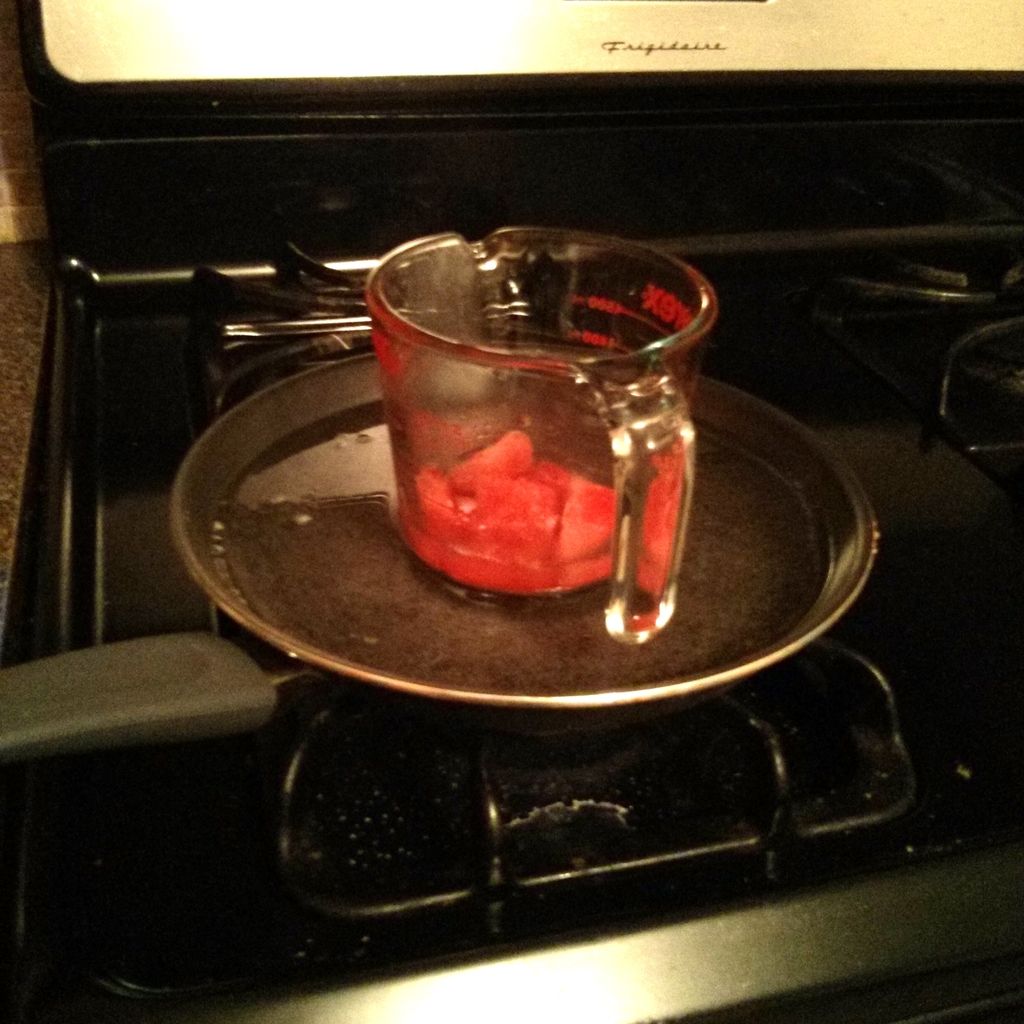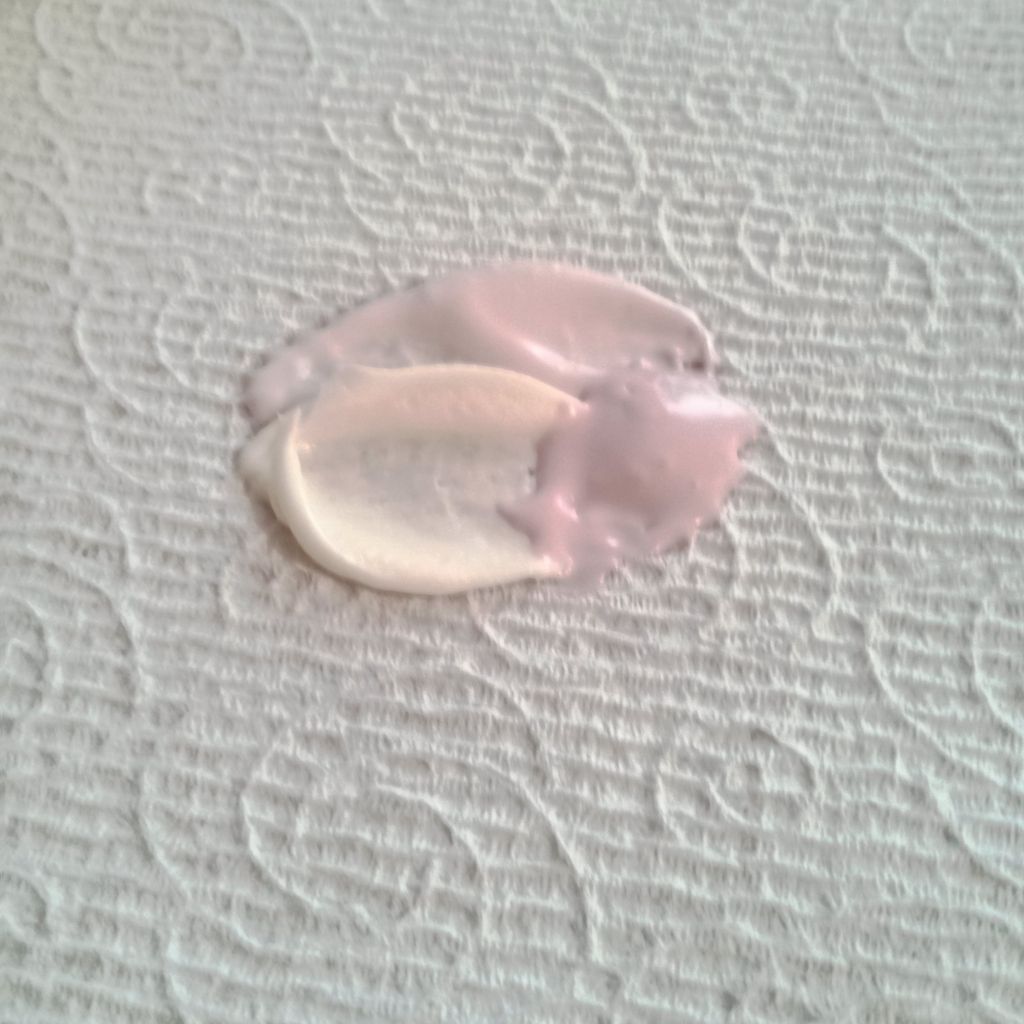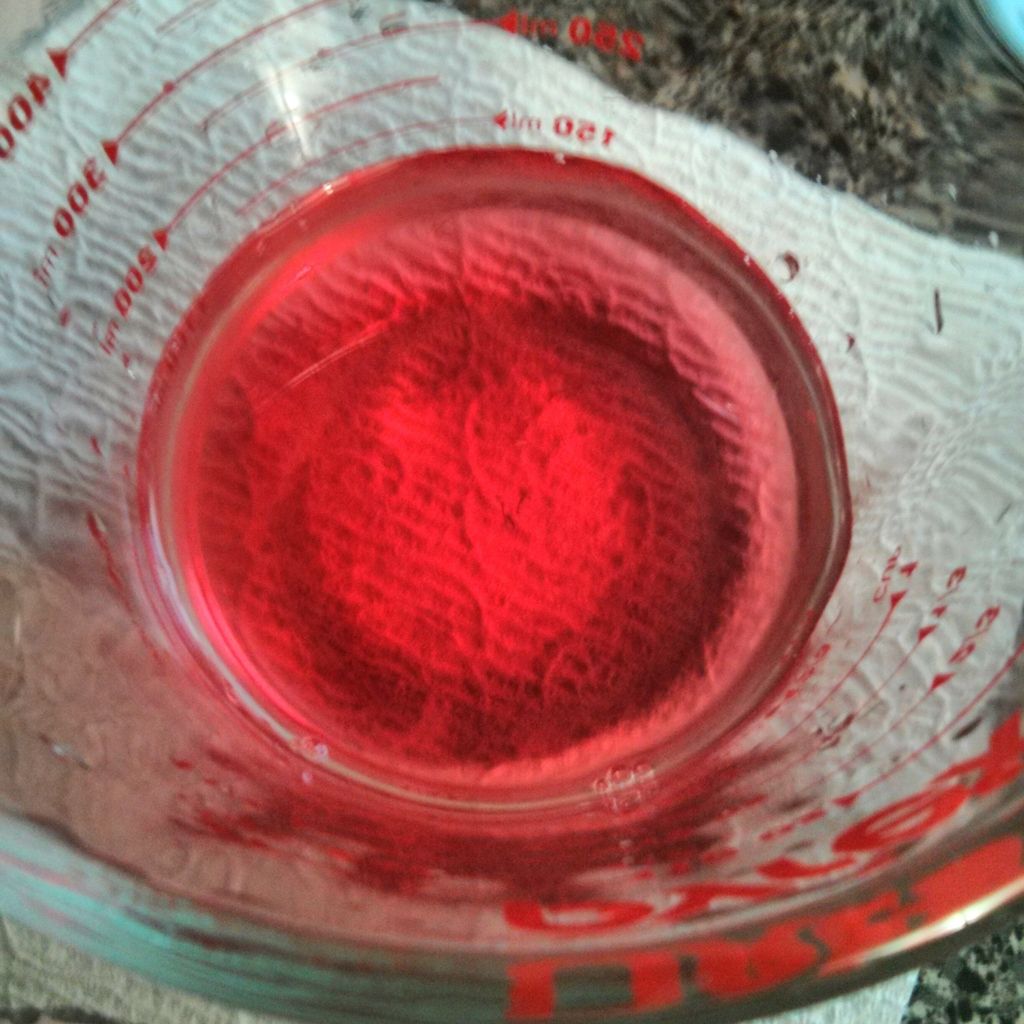Materials:
- High ethanol content liquor (vodka)
- 40% (80 proof) vodka used
- Higher proof makes volume reduction easier due to lower boiling point of ethanol
- Pyrex glass container for extraction
- Liquid measuring cup used
- Frying pan for water bath
- Plant matter
- Tested: canned beets, spinach, watermelon, blackberries
- Worked: canned beets, blackberries
Procedure:
- The frying pan was filled 3/4 way up with water, then heated over medium heat until small bubbles formed.
- Plant matter was added to the Pyrex container with enough vodka to cover it, then the container was placed into middle of the frying pan bath.
- The reaction was left for approx. 30 min (until the color of the vodka no longer appeared to be changing and alcohol could no longer be smelled).
- The reaction mixture was transferred to a ceramic bowl, then the plant matter was removed before letting the colored solution cool to room temperature.
Fig. 2: Coloring concentration
- The ceramic bowl was covered and the coloring solution was set to concentrate overnight. The bowl was swirled occasionally to recollect dried dye along the waterline.
Results:
Of the tested plants, the canned beets and blackberries were the only two to work. Both produced a similar hue of purple-red coloring. When the blackberry coloring was used on cream cheese frosting, the result was a light purple-red pastel frosting with a slightly runnier textured due to inadequate dye concentration prior to use and to mixing (Fig. 3). Adding a teaspoon of the dye to a cup water imparted a moderate red coloring which soon thinned (Fig. 4). in both instances, no blackberry taste was conferred (same for beets).
Fig. 3: Blackberry colored cream cheese frosting
Fig. 4: Blackberry colored water
Explanations:
For setup considerations, Pyrex and ceramic containers were used to hold the dye solution as a precaution against possible dye discoloration due to reactions with the container. Low boiling water was used to roughly manage the reaction temperature while reducing the chance of degradation, due to heat in this instance. Coloring concentration was performed prior to testing as a precaution against changes in food texture due to the addition of large quantities of water. The concentrating bowl was covered to prevent dust from depositing in the coloring solution and to lessen the chances of dye degradation due to interaction with ambient light. Vodka was used for extraction rather than water to lower the external polarity relative to the plant material's internal environment. The result is a polarity gradient across the membrane of the plant cells that aided in the migration of relatively non-polar dye molecules outward from within the plant cells while trapping other more polar molecules, one such molecule type being sugars, that would confer flavor. In this way, the coloring produced by this method differs from the juice of the tested plants. Dye color consistency should be considered when using the blackberry coloring, as anthocyanin pigments respond to changes in pH with changes in color. Color degradation over time is another consideration, and coloring soon before consumption is recommended (when added to water, the coloring soon reduced in intensity, an effect which may be reduced or enhanced by the contents of what is being colored) The produced colorings will contain ethanol at low concentrations, a consideration more than a concern.
I was only able to produce purple-red coloring, but it is likely that other untested plant materials will be able to produce differing colors. I will be leaving which plants can color be extracted from in this method as an open question, so if you find any others please let me know in the comments!




I really like your blog. I really appreciate the good quality content you are posting here for free. May I ask which blog platform you are using?
ReplyDeleteDyes And Pigments Importers In Delhi
Hello,
ReplyDeleteThank you for the compliment! I use Blogger for this blog.